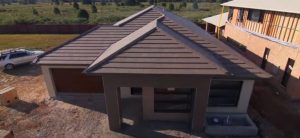How Long Does a House Last in Australia?
Australian homeowners often wonder about the longevity of their houses. The lifespan of a house can vary depending on several factors, including construction materials, maintenance, location, and climate. In this article, we will explore these factors and provide insights into how long a house can last in Australia.
Factors Affecting House Lifespan
1. Construction Materials
The choice of construction materials significantly impacts the durability and lifespan of a house. In Australia, houses are commonly built using various materials such as brick, timber, concrete, and steel. Each material has its advantages and considerations.
Brick: Brick houses are known for their longevity, often lasting for decades or even centuries. The durability of brick structures is attributed to their resistance to fire, pests, and rot. Properly maintained brick houses can easily last over 100 years.
Timber: Timber-framed houses are popular in Australia due to their cost-effectiveness and versatility. However, timber is susceptible to termite damage and decay if not adequately protected. Regular maintenance and proper treatment can significantly extend the lifespan of timber houses, which typically range from 30 to 60 years.
Concrete: Concrete is a durable material widely used in modern construction. Concrete houses are known for their strength, resistance to fire, and low maintenance requirements. With proper care, a concrete house can last for several decades or even longer.

Steel: Steel-framed houses are gaining popularity due to their strength and resistance to pests and rot. Steel structures are highly durable and can last for more than 50 years. However, the lifespan of steel houses can be influenced by factors such as corrosion if not adequately protected.
2. Maintenance
Regular maintenance is essential to ensure the longevity of a house. Adequate upkeep can prevent issues such as water damage, structural deterioration, and pest infestation. Key maintenance activities include:
- Roof Inspections and Repairs: Regularly inspecting and repairing the roof can prevent leaks and water damage, which can weaken the structure over time.
- Foundation Maintenance: Ensuring proper drainage and addressing foundation cracks promptly can prevent structural issues.
- Painting and Sealing: Painting the exterior and sealing surfaces protects against weathering, moisture, and pests.
- Plumbing and Electrical Checks: Regular inspections and timely repairs or upgrades ensure the efficient functioning of these essential systems.
By investing in routine maintenance and addressing any issues promptly, homeowners can significantly extend the lifespan of their houses.
3. Location and Climate
The geographical location and climate conditions play a vital role in the longevity of a house. Australia has diverse climates, ranging from tropical in the north to temperate in the south. Factors such as extreme temperatures, high humidity, coastal exposure, and bushfire-prone areas can impact the lifespan of a house.
In coastal regions, houses are more susceptible to corrosion due to salt air exposure. Additionally, areas prone to bushfires require specific construction techniques and fire-resistant materials to enhance the house’s lifespan. Proper design, materials, and maintenance tailored to the local climate can help maximize a house’s longevity.

Conclusion
While the lifespan of a house in Australia can vary depending on factors such as construction materials, maintenance, location, and climate, a well-built and properly maintained house can last for several decades or even centuries. Brick houses, known for their durability, can easily surpass 100 years, while timber houses may last around 30 to 60 years with proper maintenance. Concrete and steel houses offer excellent longevity when maintained appropriately. https://citibuildconstruction.com.au/construction-company-eastern-suburbs/
Homeowners should prioritize regular maintenance activities, such as roof inspections, foundation maintenance, painting, and plumbing checks, to ensure the structural integrity of their houses. Moreover, considering the location and climate when building or renovating a house can further enhance its lifespan.
By understanding the factors that affect a house’s lifespan and taking proactive measures, homeowners in Australia can enjoy their homes for generations to come.
